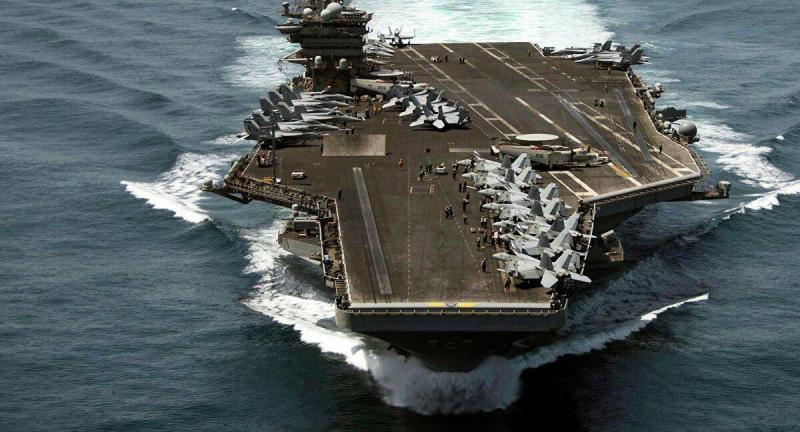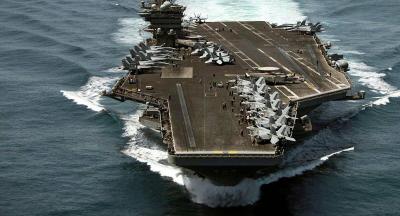A U.S. Department of Defense official announced the departure of the U.S. aircraft carrier USS Nimitz from the Gulf after nine months of deployment, which was considered a strong signal for de-escalation with Tehran.
French news agency AFP reported Pentagon spokesman John Kirby announcing Wednesday the departure of the USS Nimitz from the Gulf after nine months of presence, noting that the United States has no plans to send another aircraft carrier to replace the one withdrawing from the Gulf, which is seen as a significant de-escalation signal to Tehran. Kirby added that the Nimitz is leaving the area of responsibility of Central Command, which covers the entire Middle East. He pointed out that Defense Secretary Lloyd Austin believes that the U.S. maintains a strong enough presence in the Middle East to respond to any attack.
In response to a question about whether the departure of this naval force was a gesture of appeasement to Iran, the Pentagon spokesman emphasized that "the Secretary was considering the geostrategic environment when he approved the carrier's withdrawal," adding that the movement was dictated by the exceptionally long duration of this deployment and the necessity of maintaining the ships. The spokesman did not mention whether the Nimitz would be replaced by another aircraft carrier in the Gulf, stating only, "We continuously assess the level of threat. We are constantly trying to respond to this threat with appropriate capabilities."
He indicated that the withdrawal of the Nimitz from Central Command is part of the rotation of naval vessels, confirming that the visit of the Central Command chief to Saudi Arabia is not related to negotiating the establishment of permanent military bases. The Pentagon spokesman also noted that President Biden wants to review the U.S. contribution to supporting offensive operations of Saudi Arabia in Yemen, where the world's largest humanitarian disaster is currently unfolding, emphasizing that when providing support to partners, it should align with their interests and values. The new U.S. President Joe Biden aims to return to the 2015 agreement, intended to prevent Tehran from acquiring nuclear weapons, which his predecessor Donald Trump withdrew from in 2018.
The aircraft carrier had been deployed in September to monitor Iranian movements and deter Tehran from any aggression against U.S. forces in the region. The Nimitz had already completed an exceptionally long deployment of 270 days, first in its home area in the Pacific and then in the Middle East, where it transited through the Gulf and off the coast of Somalia during the withdrawal of U.S. forces from those countries.




